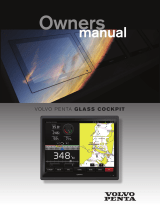
ii echo 200, echo 300c, echo 500c, and echo 550c Owner’s Manual
Introduction
Registering Your Device .......................................................................i
Contacting Garmin Product Support.....................................................i
Manual Conventions .............................................................................i
Entering Numerical Values ...................................................................i
Keys.................................................................................................... 1
Turning On and Turning Off the Device .............................................. 1
Color or Grayscale Display ................................................................. 1
Conguring the Initial Device Settings ................................................ 1
Turning On the Device Automatically ................................................. 1
Adjusting the Backlight ....................................................................... 1
Adjusting the Color Scheme ............................................................... 2
Setting the Color Mode ....................................................................... 2
Adjusting the Contrast of the echo 200 .............................................. 2
Setting the Beeper .............................................................................. 2
Menu Timeout ..................................................................................... 3
Using Quick Adjust ............................................................................. 3
Selecting a Page ................................................................................ 4
Full Screen Page ................................................................................ 4
Split Zoom Page ................................................................................. 5
Split Frequency Page ......................................................................... 5
Log Pages .......................................................................................... 6
Flasher Page ...................................................................................... 8
Opening the Numbers Page ............................................................... 8
Sonar Screen Settings........................................................................ 9
Alarms .............................................................................................. 13
Sonar Numbers ................................................................................ 15
Calibration ........................................................................................ 16
Specications ................................................................................... 18
Cleaning the Outer Casing ............................................................... 18
Cleaning the Screen ......................................................................... 18
System Settings................................................................................ 18
Software License Agreement............................................................ 19





















